-
 bitcoin
bitcoin $114320.977035 USD
-0.40% -
 ethereum
ethereum $4152.439985 USD
-1.75% -
 tether
tether $1.000111 USD
-0.04% -
 xrp
xrp $2.843037 USD
-1.63% -
 bnb
bnb $1013.349380 USD
-1.62% -
 solana
solana $208.362767 USD
-2.10% -
 usd-coin
usd-coin $0.999783 USD
0.00% -
 dogecoin
dogecoin $0.232559 USD
-1.00% -
 tron
tron $0.333491 USD
-1.09% -
 cardano
cardano $0.806310 USD
0.19% -
 hyperliquid
hyperliquid $45.023720 USD
-1.59% -
 ethena-usde
ethena-usde $1.000819 USD
-0.06% -
 chainlink
chainlink $21.241249 USD
-2.11% -
 avalanche
avalanche $30.035416 USD
-0.66% -
 stellar
stellar $0.364984 USD
-2.05%
How do I send transactions using Trezor Suite?
Trezor Suite provides a secure, user-friendly interface for managing crypto transactions, with real-time syncing, dynamic fee suggestions, and offline signing via hardware verification.
Sep 29, 2025 at 05:55 pm
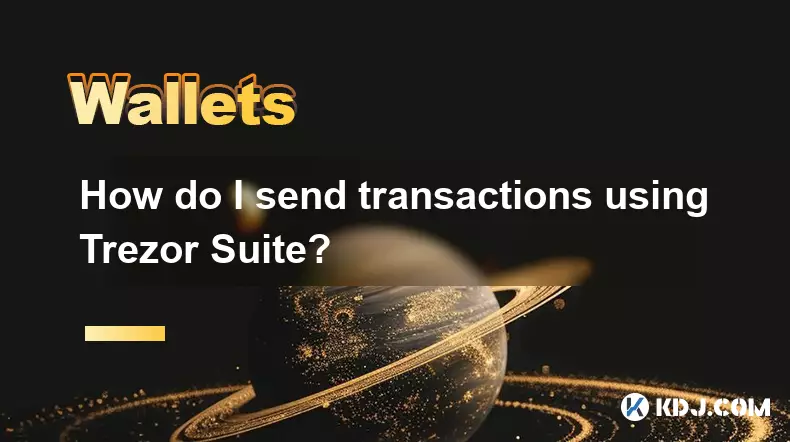
Understanding Trezor Suite Transaction Interface
1. Open the Trezor Suite desktop application after connecting your Trezor hardware wallet via USB. The interface displays your wallet’s balances, transaction history, and available actions such as sending and receiving assets.
2. Select the cryptocurrency you wish to send from the list of supported coins. Trezor Suite supports Bitcoin, Ethereum, Litecoin, and many ERC-20 tokens. Ensure that the correct account is selected if you manage multiple wallets.
3. Click on the “Send” button located prominently in the main dashboard. This opens a new window where you enter recipient details and transaction parameters.
4. The interface automatically syncs with blockchain data through backend servers, allowing real-time balance updates and accurate fee estimations based on network congestion.
5. Before initiating any transfer, confirm that your device firmware and Trezor Suite software are up to date to prevent compatibility issues or security vulnerabilities during transaction signing.
Entering Recipient and Amount Details
1. In the “Send” form, input the recipient’s public address carefully. You can paste it directly or scan a QR code using the integrated camera feature if available on your system.
2. Double-check the entire address for accuracy—sending funds to an incorrect address is irreversible in the blockchain ecosystem.
3. Enter the amount you intend to send. The field supports both full coin units and smaller denominations like satoshis for Bitcoin or gwei for Ethereum-based transfers.
4. The application calculates the equivalent value in fiat currency based on current exchange rates, providing a secondary reference for the transaction size.
5. After filling in the destination and amount, the interface proceeds to the fee selection stage, where users can adjust confirmation speed versus cost.
Configuring Network Fees and Confirming Transactions
1. Choose a transaction fee level: low, normal, or high priority. Higher fees result in faster confirmations due to greater miner incentives on congested networks.
2. Trezor Suite provides dynamic fee suggestions pulled from live mempool data, helping avoid underpayment that could lead to prolonged confirmation times.
3. Review all transaction details displayed on screen—recipient address, amount, network fee, and total deduction from your balance. No changes can be made once the transaction is signed.
4. Confirm the transaction by clicking “Continue.” The request is then forwarded to your Trezor device for physical authorization.
5. On the Trezor screen, verify each detail again. Use the device buttons to accept or reject the transaction. Only when approved locally does the signature occur, ensuring no remote compromise.
Post-Send Verification and Tracking
1. Once signed, the transaction is broadcasted to the relevant blockchain network through Trezor’s secure node infrastructure or your connected third-party node if self-hosted.
2. A success message appears in Trezor Suite with a transaction ID (TXID). This alphanumeric string serves as proof of submission and can be used for tracking.
3. Clicking the TXID opens a block explorer link where real-time confirmation progress is visible, showing inclusion in upcoming blocks.
4. Monitor the recipient’s wallet to ensure arrival. Delays may occur depending on network load, but failed transactions are rare unless fees were set too low or addresses were invalid.
5. Transaction records remain stored within Trezor Suite’s local history log, enabling future audits without relying on external platforms.
Frequently Asked Questions
Can I cancel a transaction after sending it through Trezor Suite?Trezor Suite does not support transaction cancellation. Once a transaction is signed and broadcasted, it cannot be reversed. Some blockchains allow replacing transactions with higher fees (RBF), but this must be enabled before initial submission.
What should I do if my transaction remains unconfirmed for hours?Check the network fee level used. If it was set too low, consider using a wallet service that supports child-pays-for-parent (CPFP) or replace-by-fee (RBF) to accelerate confirmation by increasing the effective fee.
Is it safe to send tokens directly from Trezor Suite without using third-party interfaces?Yes. Trezor Suite processes token transactions natively for supported assets. Private keys never leave the device, and all signing occurs offline, maintaining the highest standard of security throughout the process.
Why does Trezor Suite show a different balance than another wallet or exchange?Differences arise due to unsupported tokens, pending transactions, or use of different derivation paths. Ensure you're viewing the same account and that all transaction histories are synchronized across platforms.
Disclaimer:info@kdj.com
The information provided is not trading advice. kdj.com does not assume any responsibility for any investments made based on the information provided in this article. Cryptocurrencies are highly volatile and it is highly recommended that you invest with caution after thorough research!
If you believe that the content used on this website infringes your copyright, please contact us immediately (info@kdj.com) and we will delete it promptly.
- BlockDAG, DOGE, HYPE Sponsorship: Crypto Trends Shaping 2025
- 2025-10-01 00:25:13
- Deutsche Börse and Circle: A StableCoin Adoption Powerhouse in Europe
- 2025-10-01 00:25:13
- BlockDAG's Presale Buzz: Is It the Crypto to Watch in October 2025?
- 2025-10-01 00:30:13
- Bitcoin, Crypto, and IQ: When Genius Meets Digital Gold?
- 2025-10-01 00:30:13
- Stablecoins, American Innovation, and Wallet Tokens: The Next Frontier
- 2025-10-01 00:35:12
- NBU, Coins, and Crypto in Ukraine: A New Yorker's Take
- 2025-10-01 00:45:14
Related knowledge

How to get the Trust Wallet browser extension?
Oct 01,2025 at 12:37am
How to Access the Trust Wallet Browser Extension1. Visit the official Trust Wallet website through a secure internet connection. Navigate to the downl...
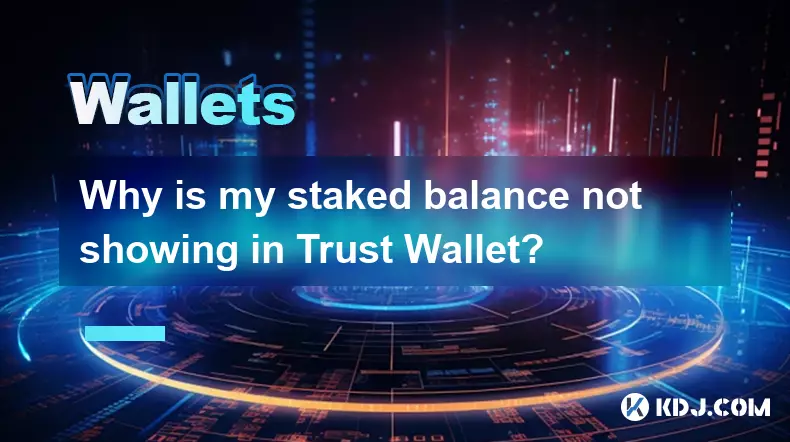
Why is my staked balance not showing in Trust Wallet?
Oct 01,2025 at 12:54am
Understanding Decentralized Exchanges in the Crypto Ecosystem1. Decentralized exchanges (DEXs) operate without a central authority, allowing users to ...
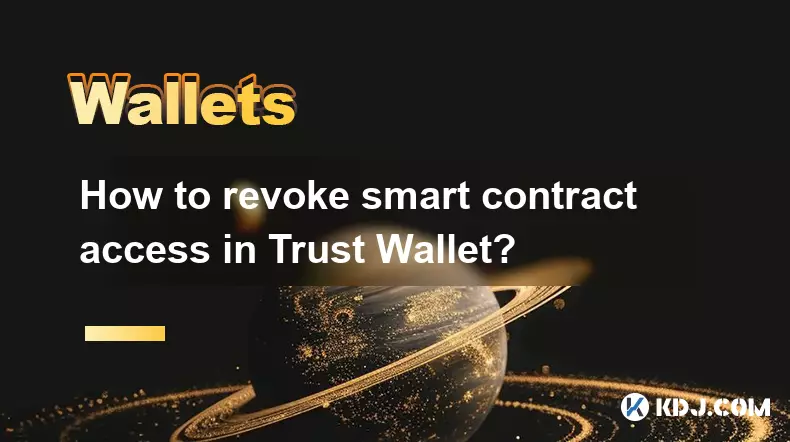
How to revoke smart contract access in Trust Wallet?
Oct 01,2025 at 12:54pm
Understanding Smart Contract Access in Trust Wallet1. Smart contracts are self-executing agreements built on blockchain networks, commonly used in dec...
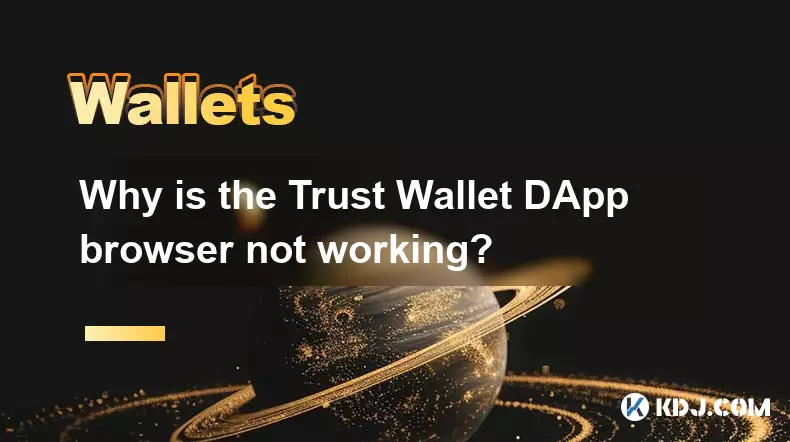
Why is the Trust Wallet DApp browser not working?
Oct 01,2025 at 05:36am
Common Causes of Trust Wallet DApp Browser Issues1. The DApp browser within Trust Wallet may fail to load due to connectivity problems. A weak or unst...
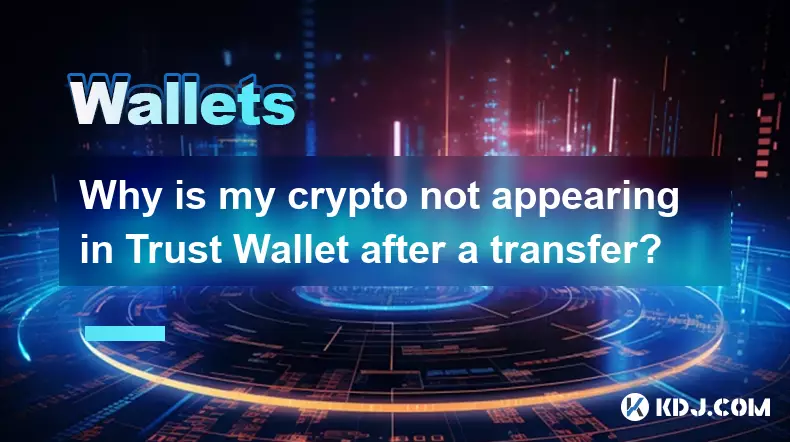
Why is my crypto not appearing in Trust Wallet after a transfer?
Oct 01,2025 at 04:36am
Common Reasons Your Crypto Doesn’t Appear in Trust Wallet1. The transaction is still pending on the blockchain. Blockchain confirmations can take time...
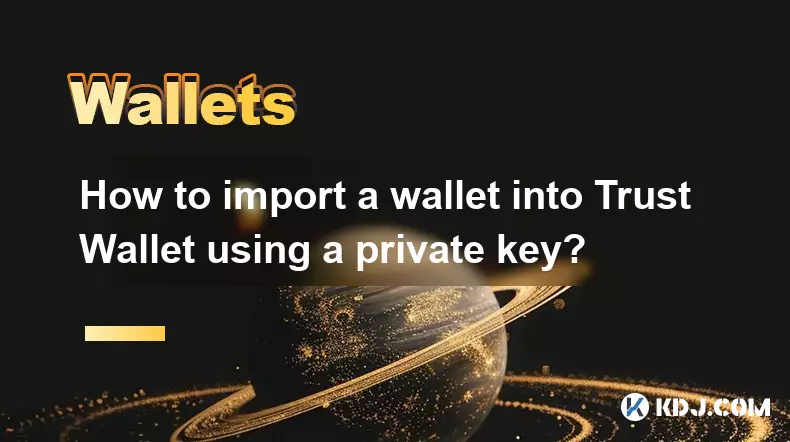
How to import a wallet into Trust Wallet using a private key?
Oct 01,2025 at 09:54am
Understanding Wallet Import via Private Key in Trust Wallet1. Trust Wallet allows users to import existing cryptocurrency wallets using a private key,...

How to get the Trust Wallet browser extension?
Oct 01,2025 at 12:37am
How to Access the Trust Wallet Browser Extension1. Visit the official Trust Wallet website through a secure internet connection. Navigate to the downl...

Why is my staked balance not showing in Trust Wallet?
Oct 01,2025 at 12:54am
Understanding Decentralized Exchanges in the Crypto Ecosystem1. Decentralized exchanges (DEXs) operate without a central authority, allowing users to ...

How to revoke smart contract access in Trust Wallet?
Oct 01,2025 at 12:54pm
Understanding Smart Contract Access in Trust Wallet1. Smart contracts are self-executing agreements built on blockchain networks, commonly used in dec...

Why is the Trust Wallet DApp browser not working?
Oct 01,2025 at 05:36am
Common Causes of Trust Wallet DApp Browser Issues1. The DApp browser within Trust Wallet may fail to load due to connectivity problems. A weak or unst...

Why is my crypto not appearing in Trust Wallet after a transfer?
Oct 01,2025 at 04:36am
Common Reasons Your Crypto Doesn’t Appear in Trust Wallet1. The transaction is still pending on the blockchain. Blockchain confirmations can take time...

How to import a wallet into Trust Wallet using a private key?
Oct 01,2025 at 09:54am
Understanding Wallet Import via Private Key in Trust Wallet1. Trust Wallet allows users to import existing cryptocurrency wallets using a private key,...
See all articles










































































